How To Deadhead Bee Balm (Easy Guide)
If you’re all about that bee balm life (and let’s be honest, who isn’t?), you know that sometimes love means having to say goodbye… to spent blooms, that is.
That’s right, we’re talking about deadheading, the art of snipping off old flowers to keep your plants fresh, fabulous, and flourishing.
But when it comes to bee balm, the queen of the flower fiesta, deadheading can seem a little daunting.
Trust me, I’ve been there – shears in hand, sweat on my brow, wondering if I’m about to give my beloved bee balm a bad haircut.
No worries though, I’ve got the lowdown on how to tidy up your bee balm like a pro.
So let’s get into the nitty-gritty of deadheading bee balm – all the tips, tricks, and best practices that’ll have your bee balm bouncing back in no time.
Understanding Deadheading Bee Balm
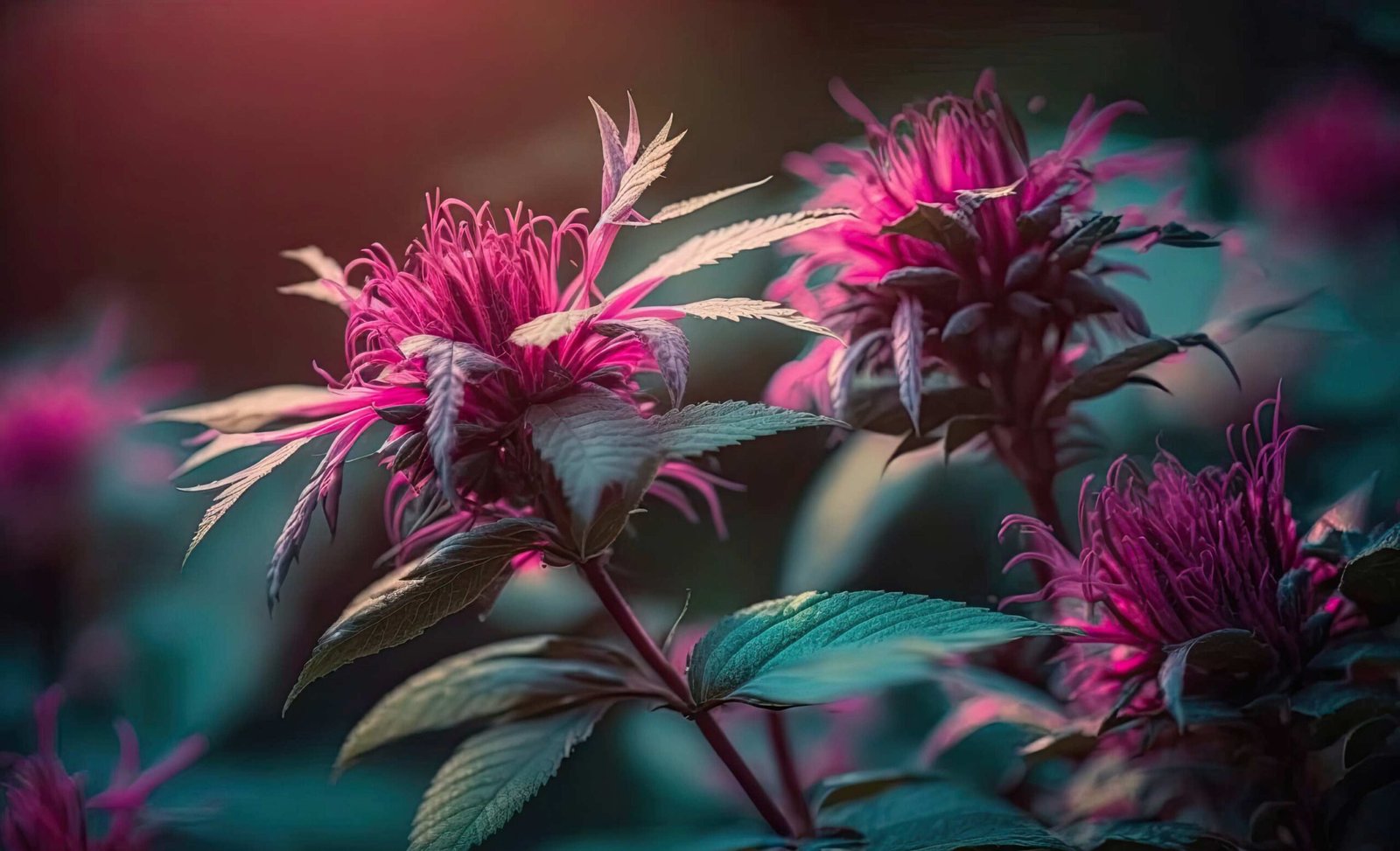
What is Deadheading?
Deadheading is the process of removing wilted or dead blossoms from a plant.
This simple gardening technique helps to improve the plant’s health and appearance by promoting air circulation and preventing diseases.
Why Deadhead Bee Balm?
When you deadhead bee balm, you promote healthy growth and encourage better blooms.
As a result, you will attract more butterflies and hummingbirds, making your garden a thriving, beautiful environment.
Additionally, deadheading helps prevent powdery mildew and fungal problems that may affect the plant’s overall health.
Best Time to Deadhead
The ideal time to deadhead bee balm is when the flower heads have started to wilt or fade, and the petals begin to fall off.
This usually occurs after the plant has finished blooming.
By deadheading at this time, you allow the plant to focus its energy on producing new growth rather than maintaining the old, wilted flowers.
To successfully deadhead your bee balm, follow these steps:
- Clean and disinfect your pruning shears: This helps minimize the spread of funguses, pests, or diseases.
- Deadhead as soon as the flowers begin to wilt and die: Cut back the flowering stem to within ¼ inch of a leaf or leaf bud near the top of the stem.
- Clean up the garden area: Rake up and compost or dispose of the removed flowers, keeping your garden tidy and reducing the risk of diseases spreading.
Deadheading Bee Balm: Step-by-Step Guide
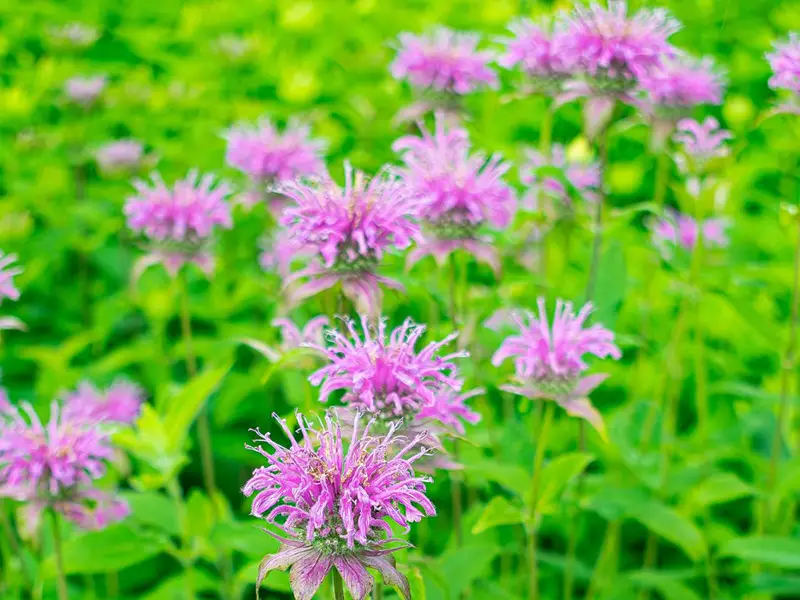
Tools and Materials
To get started with deadheading bee balm, gather the following tools and materials:
- Pruning shears: Ensure they are clean and disinfected to prevent the spread of diseases or pests.
- Gloves: For protection and cleanliness while handling the plant.
- Trash or compost bin: For collecting and disposing of the cut blooms.
Locating Spent Blooms
Before making any cuts, examine your bee balm plant for spent blooms.
The ideal time to deadhead is when the flower heads have begun to wilt or fade, and the petals are falling off.
This indicates that the blooms are no longer productive and can be removed.
Making Proper Cuts
Follow these steps to make the proper cuts when deadheading your bee balm:
- Cut the stem: Using your clean and disinfected pruning shears, cut back the flowering stem to within ¼ of a leaf or leaf bud near the top of the stem. Make sure to make clean cuts to prevent damage to the plant.
- Tip: Pinching off the stems can also be an effective method, especially for younger plants, if you don’t have pruning shears available.
- Trim the foliage: After the first major flowering flush, consider cutting back up to one-third of the plant from the top. This will remove any remaining flowers and rejuvenate the foliage for the remainder of the growing season.
Cleanup and Disposal
Once you have deadheaded your bee balm plant, it’s important to clean up the garden area.
Follow these steps for proper cleanup and disposal:
- Rake up: Gather the removed flowers and foliage using your gloved hands or a rake.
- Compost or dispose: Depending on your preference and available resources, add the gathered flowers to your compost bin or dispose of them in the trash.
Promoting Bee Balm Growth and Health
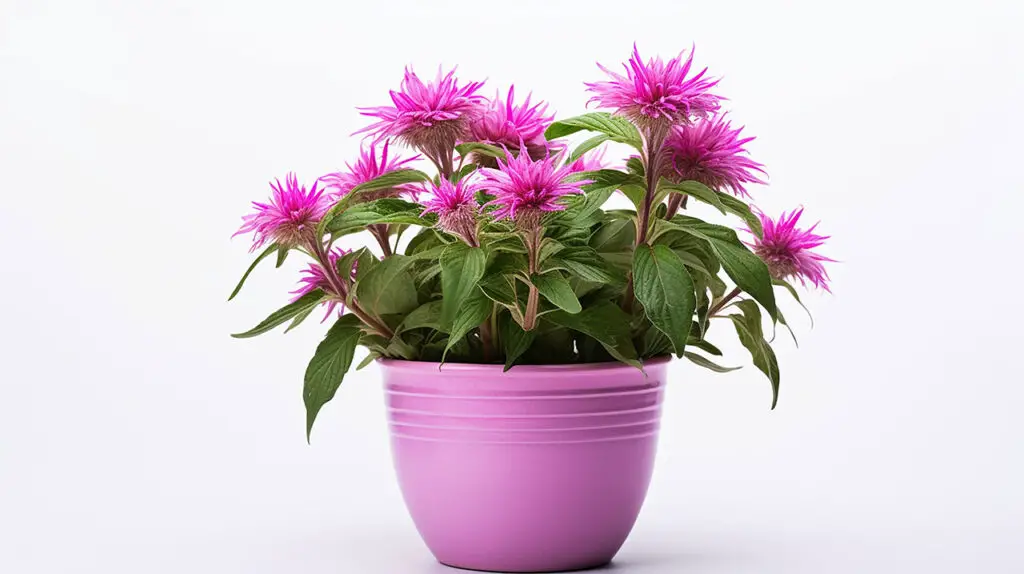
Watering and Fertilizing
To maintain healthy bee balm growth, it is crucial to provide the plants with consistently moist, well-draining soil.
Water your bee balm regularly, especially during dry periods, ensuring that the soil stays evenly moist.
Monitor the moisture level of the soil and adjust your watering schedule accordingly.
Fertilizer can enhance the growth and overall health of your bee balm plants.
In early to mid-spring, apply a slow-release fertilizer to promote new growth.
This will help your plants stay strong and vibrant throughout the growing season. Be sure to follow the manufacturer’s instructions to ensure the correct application.
Air Circulation and Disease Prevention
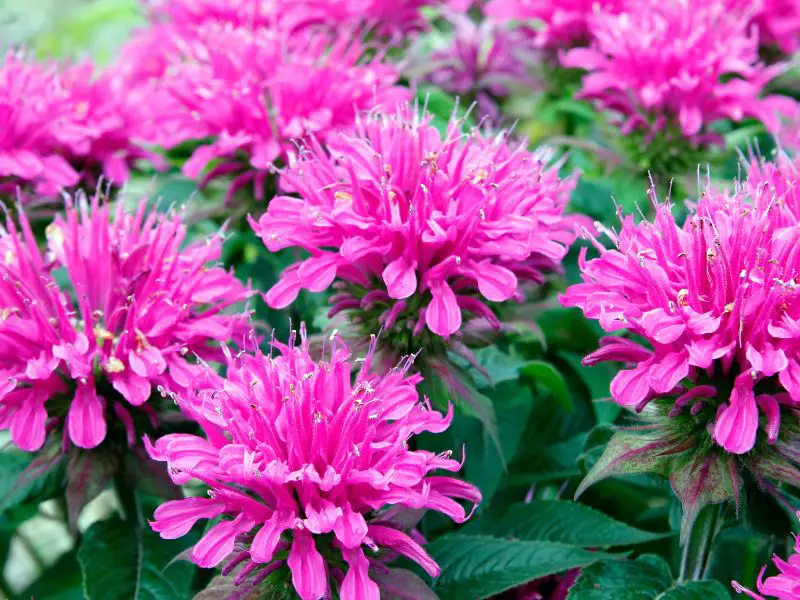
Proper air circulation is essential for preventing diseases, such as powdery mildew and fungus problems, which can negatively impact the growth and appearance of your bee balm plants.
To promote good air circulation:
- Plant bee balm in partial shade to full sun
- Space plants appropriately, as specified on the plant tag
- Prune away any unhealthy or dead foliage
- Remove debris from the garden area regularly
Understanding Self-Seeding
Bee balm plants are known for their ability to self-seed, which can lead to new plants appearing in your garden during the growing season.
While self-seeding can be beneficial, it may also result in overcrowding, which can impact air circulation and make your plants more susceptible to diseases.
To manage self-seeding, you can:
- Regularly monitor your garden for new seedlings
- Thin out any overcrowded areas by removing excess plants or transplanting them to other locations
- Provide proper spacing and care for seedlings to promote healthy growth
Bee Balm Propagation and Maintenance
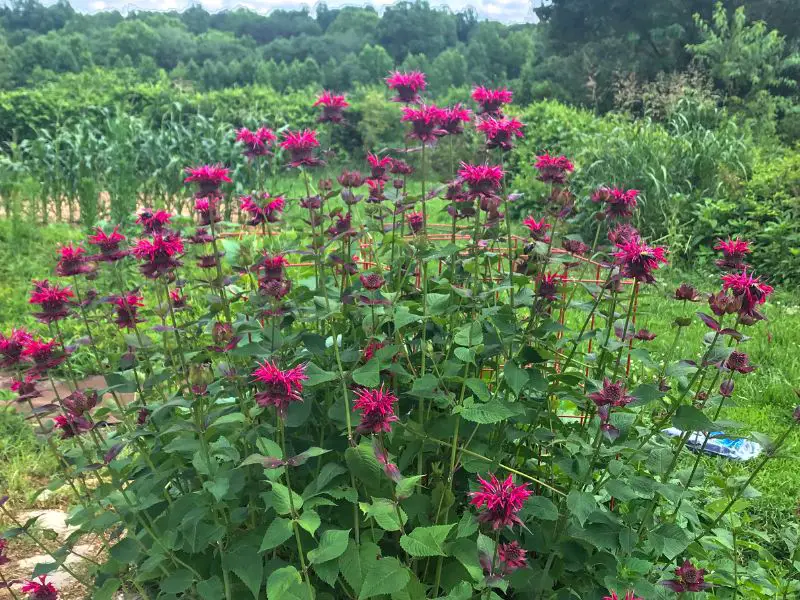
Pruning Techniques
When it comes to maintaining your bee balm plants, pruning is an essential technique to keep them healthy and flourishing.
Deadheading your bee balm is crucial because it encourages the plant to produce more blooms throughout the season while also preventing the plant from becoming too leggy.
The ideal time to deadhead is when the flower heads have started to wilt or fade and the petals begin to fall off.
Cut the stems back to within ¼ of a leaf or leaf bud near the top when deadheading.
In addition to deadheading, it’s good to cut back your bee balm plants during the spring and fall to promote new growth and keep them looking their best.
During spring, trim back any dead or damaged stems to allow room for new growth.
In the fall, after the plants have finished blooming, cut them back to about 6 inches above ground level to prepare them for winter dormancy.
Propagation Methods
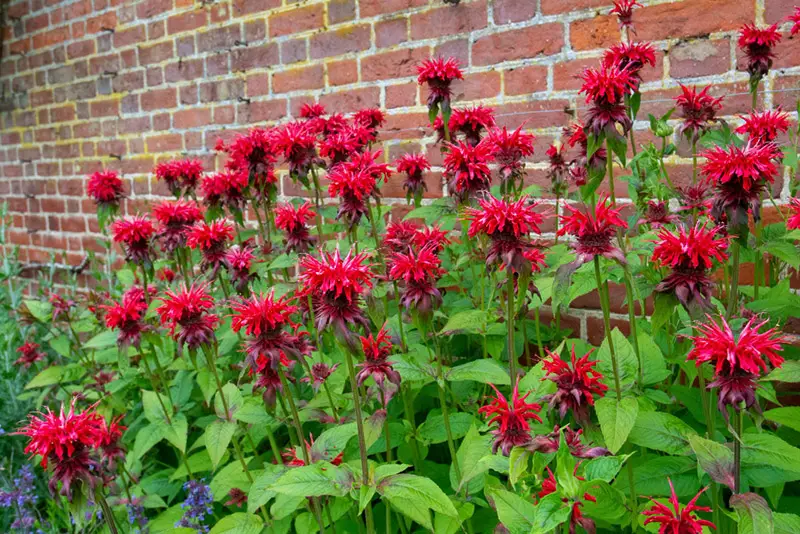
Bee balm can be propagated through a few different methods:
- Division: This is the easiest method for propagating bee balm. In the spring or fall, use a sharp shovel to slice through the root system of a healthy, mature plant. Dig up the divided portion, ensuring you capture an adequate amount of roots, and transplant it to a new location with well-prepared soil and good drainage. The ideal spot should have rich soil amended with compost.
- Stem Cuttings: You can also propagate bee balm from stem cuttings. Choose a healthy stem and cut a section that includes a few leaves. Trim off the lower foliage, dip the cut end in rooting hormone, and place it in a container with moist, well-draining soil. Keep the cutting in a bright area with indirect light and maintain consistent moisture until it roots. Once rooted, transplant it to your desired location.
- Seed Propagation: While not as common, you can start new bee balm plants from seeds. Sow the seeds indoors in late winter or early spring, using a seed tray filled with moist seed starting mix. Keep the tray in a warm, well-lit location and maintain consistent moisture. Once the seedlings are large enough to handle, transplant them to larger containers and then to your garden once the threat of frost has passed.
Keep in mind that bee balm can be quite spreading and potentially invasive, so monitoring and controlling its growth is important for maintaining a balanced garden.
Regular pruning and deadheading help prevent excessive spread, while being mindful of propagation methods and placement in your garden can help minimize the risk of invasiveness.
